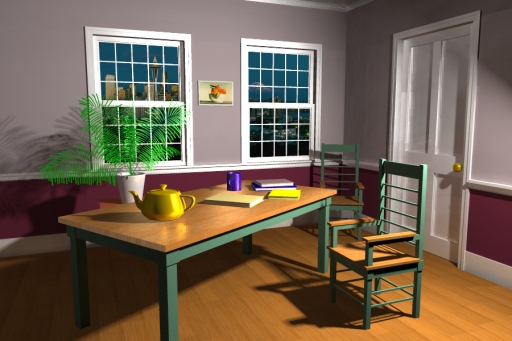

Abstract: This dissertation concerns efficient computation of realistic images. To compute realistic synthetic images, the effect of global illumination is essential. Ray tracing algorithms solve the global illumination problem for specular interreflections, and radiosity algorithms solve it for diffuse interreflections. But computing a solution is more complicated when the surfaces are glossy. This dissertation describes hierarchical techniques for efficient solution of the glossy global illumination. Two types of hierarchy are utilized: wavelets to accurately represent radiance distributions on surface patches, and clusters to approximately represent radiant intensity from groups of surface patches. Without hierarchical techniques, the solution time would be quadratic in the number of patches and O(n_b^1.5) in the number of basis functions n_b. The hierarchical techniques make solution time linear in both the number of patches and the number of basis functions. This reduction is significant since the number of patches and basis functions are large for accurate solutions in realistic environments. Furthermore, directional importance is used to focus refinement of the solution on parts that contribute significantly to a particular view of the scene. Our method is the first finite-element method capable of handling complex glossy scenes.
One-line summary: Generalizes the use of wavelets, clustering, and importance from diffuse global illumination ("radiosity") to glossy global illumination -- a higher-dimensional problem.
Download dissertation here: UW-CSE-95-07-04.PS.Z (16 MB).
Back to Per's publication page.